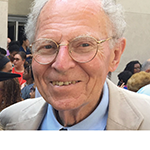At least 50% of fellows who train at NIAMS move into academia or to higher level positions that require physician–scientists, such as the FDA or pharmaceutical companies, Dr. Katz says. (Some accomplished alumni of the NIAMS training programs are highlighted at http://www.rheumatology.nih.gov.)
Those efforts have been expanded during the past seven to eight years with the addition of advanced postdoctoral training in the Scholars in Translational Research Program.
From Scholar Road to Tenure Track
As with many other rheumatology and immunology training programs, the Intramural Research Program (IRP) at NIAMS grows its strength not only by training physician–scientists, but also by retaining talent as part of the faculty. Dr. Goldbach-Mansky trained at NIAMS, initially in adult rheumatology and then in pediatric rheumatology; Dr. Kastner also came to NIH as a NIAMS rheumatology fellow, and Drs. Siegel and O’Shea trained in other NIH labs as postdoctoral fellows.

The journey to NIAMS for Michael Ombrello, MD, an assistant clinical investigator in NIAMS and head, Translational Genetics and Genomics Unit, began when he encountered several children with unexplained recurrent episodes of fever during his Med/Peds residency at Saint Louis University. Learning that Dr. Kastner and his group at NIAMS had begun to identify the molecular bases of similar phenotypes, Dr. Ombrello contacted Dr. Kastner to learn more about autoinflammation.
When Dr. Ombrello was recruited as the inaugural Henry Metzger Scholar in Translational Medicine in 2009, his appointment included intellectual, as well as financial, support for the first genome-wide association study of systemic juvenile idiopathic arthritis (sJIA), an international collaborative study that includes nearly 1,000 affected children.
“As I approached the end of the Scholar road, I was very eager to take leadership of my own research group,” Dr. Ombrello recalls.

NIAMS adopted the NIH Assistant Clinical Investigator (ACI) track for scientists whose abilities and focus in research make them candidates for tenure-track positions (for which they may compete), and Dr. Ombrello became NIAMS’ first ACI.
Between training the next generation of physician scientists, characterizing new diseases and testing new treatments, the work at NIAMS continues at a “dizzying pace,” says Dr. Siegel.
Whenever Dr. O’Shea interviews potential trainees, he tells them: “If your goal is to learn the textbook of rheumatology, you can do so and be a good rheumatologist in many places. If what you want to do is write the textbook of rheumatology for the future, then this is the place for you!”
